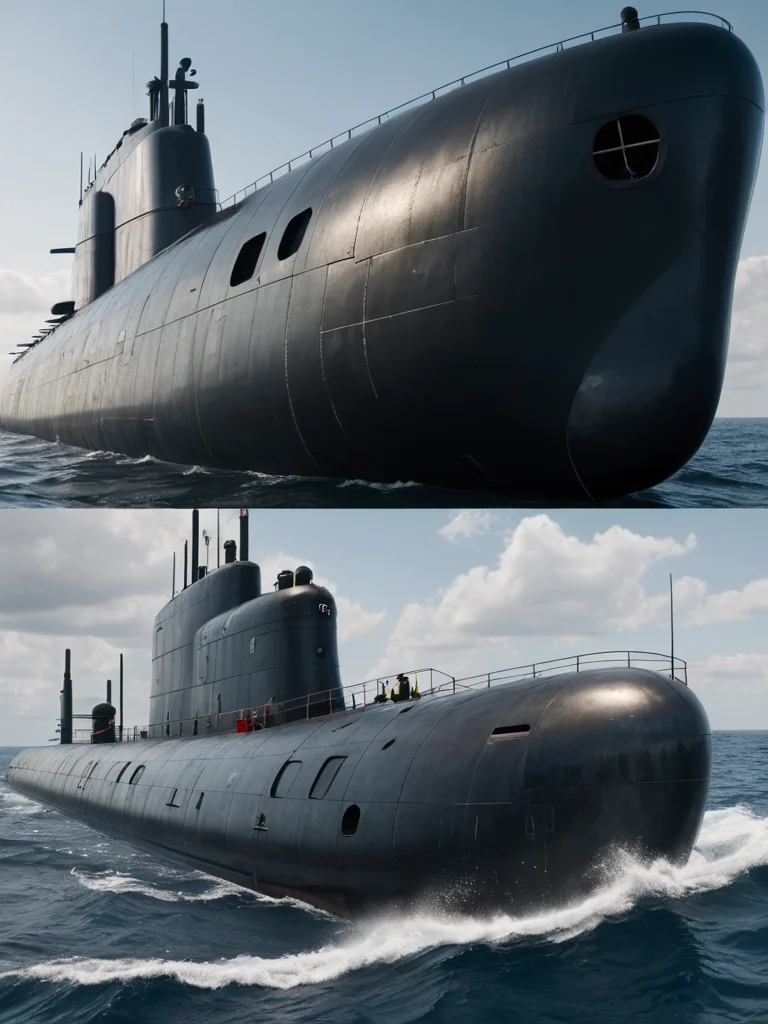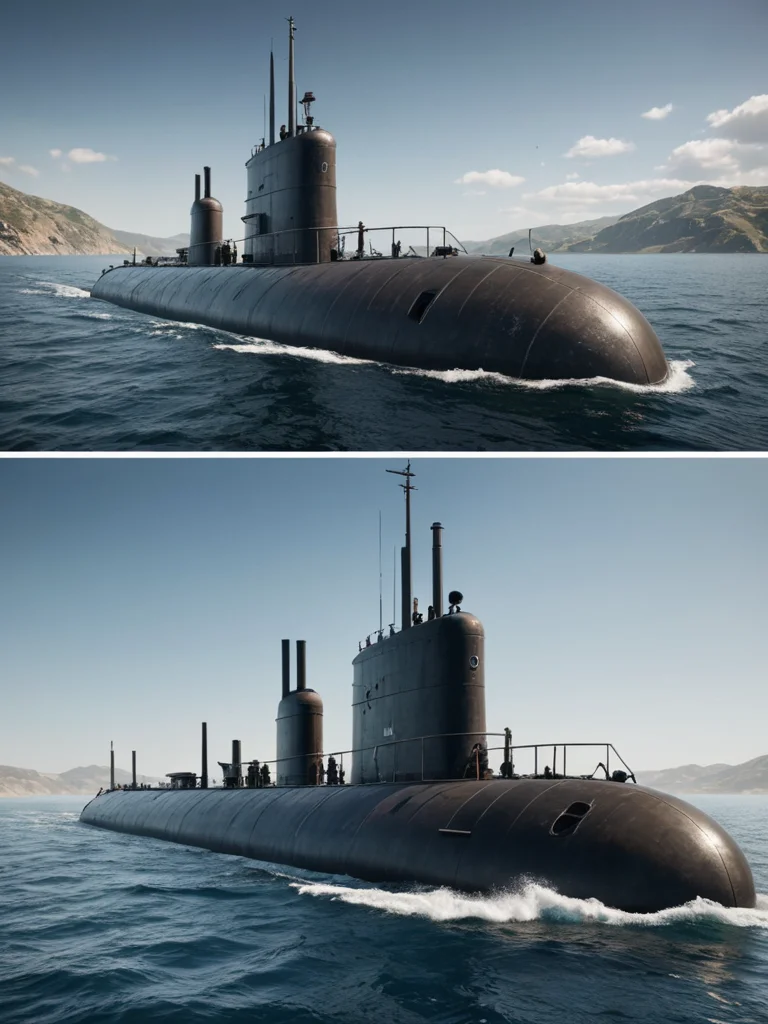Submarines, these steel whales gliding in the silence of the ocean depths, have always inspired awe and admiration. They are the embodiment of technological progress, a symbol of hidden power, and, at the same time, a small world where people live and work in conditions far from ordinary. The history of the submarine fleet spans centuries, and each stage of development has brought its own peculiarities to the lives of submariners. Today, we will peer inside this closed environment to learn about life on a submarine, the dangers that await the crew, and how modern technologies have changed the daily lives of submariners.
Daily Life and Routine: How Submariners Lived in Confined Spaces: Features of Nutrition, Sleep, and Personal Hygiene
Life on a submarine is a life of strict limitations. Space, air, water, personal time – everything is subject to strict control. Imagine being in a steel cylinder for months, where every centimeter of space has its functional purpose. There is no room for luxury or excess here, only functionality and necessity.
Nutrition on a submarine has always been a special issue. In the early years of the submarine fleet’s development, the diet was very meager and monotonous: canned goods, hardtack, salted meat. With the development of technologies and the increase in the duration of voyages, nutrition became more diverse and balanced. Today, modern submarines have full galleys where cooks prepare fresh meals using supplies of frozen products. Of course, fresh fruits and vegetables are a rarity, but efforts are made to include them in the diet first to provide the crew with necessary vitamins. Preserving food is an important factor. Special containers and storage systems are used for this, which allow for maximum extension of the shelf life of provisions.
Sleep is another important aspect of life on a submarine. In conditions of limited space and round-the-clock operation, sleep becomes a luxury. Submariners sleep in small cabins, often several people in one cabin. Bunks are usually arranged in several tiers, which allows for the most efficient use of available space. Noise and constant movement create additional difficulties for sleep, so many submariners use earplugs and sleep masks to ensure at least some rest. The watch schedule also affects sleep: submariners work in shifts, so their sleep can be fragmented and irregular.
Personal hygiene on a submarine is a matter not only of comfort but also of health. In conditions of confined space and high humidity, maintaining cleanliness and hygiene is very important. Submarines have shower facilities, but water usage is strictly limited. Submariners try to save water, using it only for the most essential needs. Washing clothes also presents a problem. Some submarines have washing machines, but their use is also limited. In most cases, submariners wash clothes by hand, using a small amount of water and soap. Shaving is an important aspect of personal hygiene. Submariners must shave regularly to avoid creating a favorable environment for the development of bacteria and fungi.
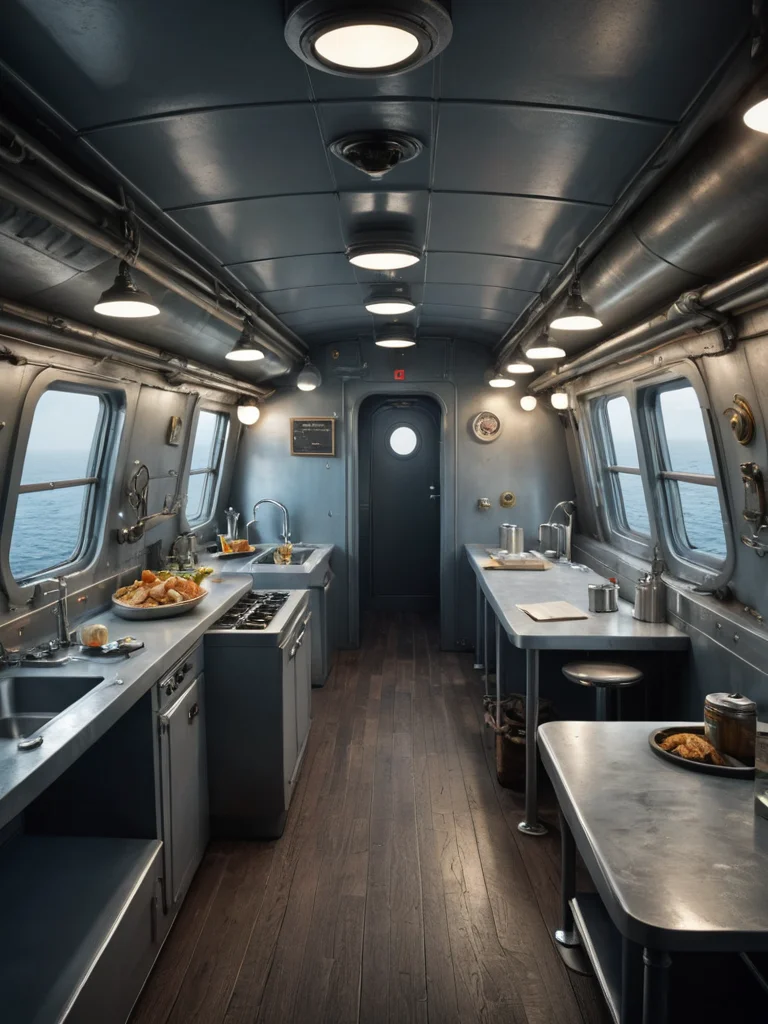
Professions and Duties: Who’s Who on a Submarine: Roles, Skills, and Crew Hierarchy
The crew of a submarine is a complex hierarchical structure, where each crew member performs their specific duties. The safety and success of task completion depend on the coordination and professionalism of the crew. The submarine commander is the highest-ranking officer, responsible for everything that happens on board. The commander makes all key decisions and bears full responsibility for the crew’s actions.
Among the key professions on a submarine, the following can be distinguished:
- Navigator: responsible for navigation and determining the submarine’s location. The navigator must have a deep understanding of marine navigation, cartography, and oceanography.
- Engineer: responsible for the proper functioning and maintenance of all mechanical systems of the submarine, including engines, pumps, air conditioning, and ventilation systems. The engineer must be a highly qualified specialist capable of quickly and effectively resolving any malfunctions.
- Electrician: responsible for the proper functioning and maintenance of all electrical systems of the submarine, including generators, distribution panels, lighting, and communication systems. The electrician must have a deep understanding of electrical engineering and electronics.
- Radio Operator: responsible for the submarine’s communication with the outside world. The radio operator must have a good understanding of radio communication and be able to work with various radio equipment.
- Torpedo Man: responsible for the preparation and maintenance of the submarine’s torpedo armament. The torpedo man must have a deep understanding of torpedo armament and be able to perform all necessary operations to prepare torpedoes for firing.
- Sonar Operator: responsible for detecting and classifying underwater targets using the sonar station. The sonar operator must have good hearing and be able to analyze sound signals coming from the water.
- Doctor (Paramedic): responsible for the health of the submarine crew. The doctor must have a broad range of medical knowledge and be able to provide first aid for various illnesses and injuries.
- Cook: responsible for preparing food for the submarine crew. The cook must be able to prepare tasty and nutritious food from a limited set of products.
The crew hierarchy on a submarine is strictly regulated. Each crew member reports to their immediate superior. The submarine commander is the highest-ranking officer, to whom all other crew members report. A clear hierarchy ensures order and discipline on board the submarine, which is especially important in extreme situations.
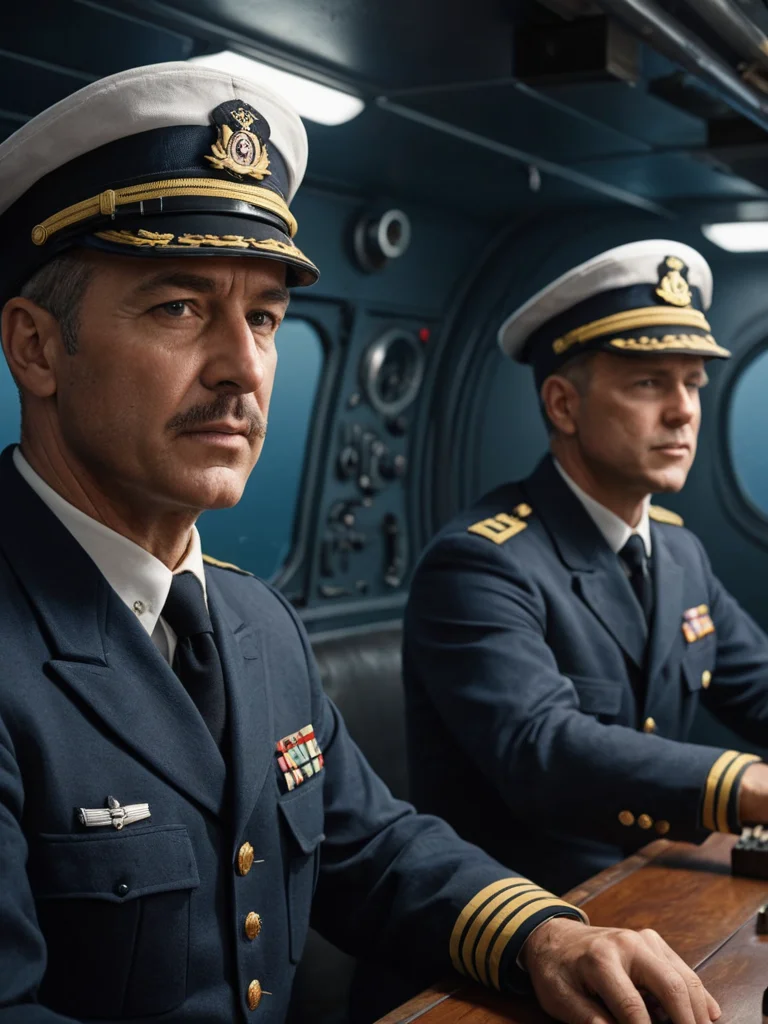
Dangers and Challenges: What Difficulties Submariners Faced: Accidents, Psychological Stress, and Long Voyages
The life of a submariner is not only the romance of the ocean depths but also constant risk and tension. Submarines are complex technical devices that can fail at any moment. Accidents on submarines are always a tragedy that can lead to the death of the entire crew.
Among the main dangers that submariners face, the following can be distinguished:
- Accidents: failure of life support systems, flooding of compartments, fires, explosions – all of these can lead to the loss of the submarine and the entire crew. The history of the submarine fleet knows many tragic examples where accidents led to the loss of submarines and their crews.
- Psychological Stress: prolonged stay in confined spaces, lack of sunlight and fresh air, constant noise and vibration – all of these have a negative impact on the psyche of submariners. Many submariners experience stress, anxiety, and depression.
- Long Voyages: submarines can be on autonomous voyages for several months. During this time, submariners do not see their loved ones and have no opportunity to communicate with the outside world. Long voyages are a serious test for the psyche and physical health of submariners.
- Depth: at great depths, the water pressure becomes immense. Even a small breach in the hull of a submarine can lead to its immediate flooding.
- Enemy Actions: in wartime, submarines become targets for enemy ships and aircraft. Submariners must be prepared to repel enemy attacks and carry out combat missions.
Psychological stress is one of the most serious challenges for submariners. Prolonged stay in confined spaces, far from home and loved ones, under constant danger, puts immense pressure on the psyche. To maintain the psychological health of the crew, special measures are carried out on submarines aimed at relieving stress and improving the psychological climate. These can include psychological decompression sessions, sports activities, watching movies, reading books, playing games, and socializing.
We must not forget about illnesses. In confined spaces, with high humidity and limited air circulation, the spread of infections occurs very quickly. Therefore, great attention is paid to disease prevention on submarines. The crew undergoes regular medical examinations, vaccinations are carried out, and cleanliness and hygiene are maintained.
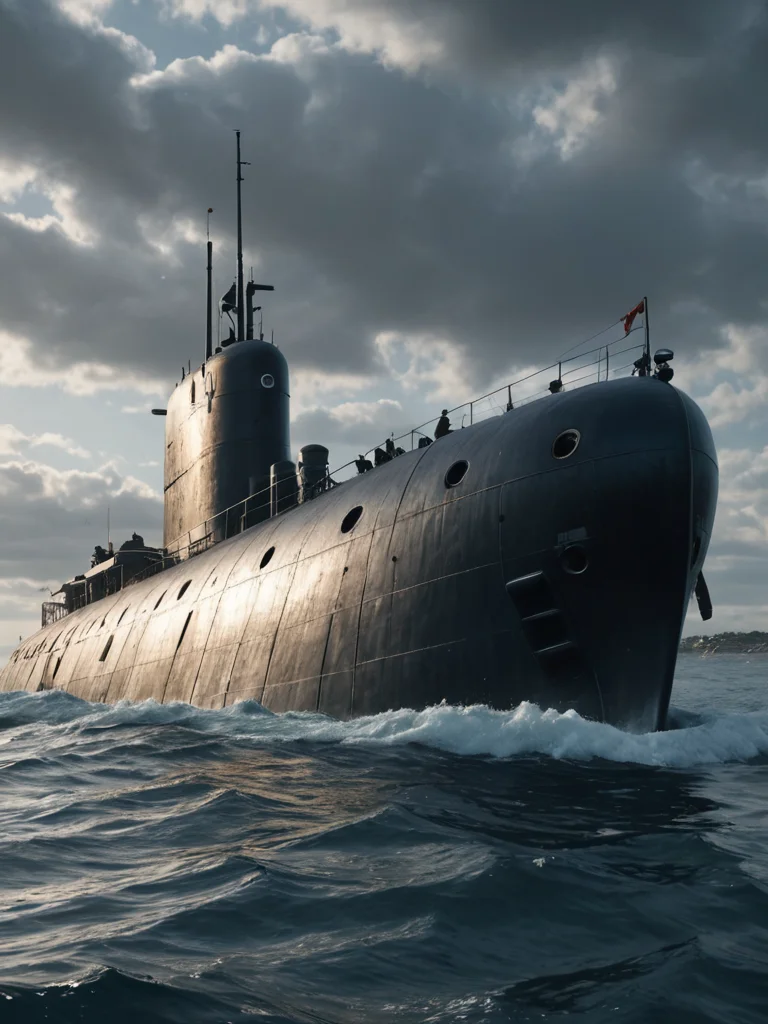
Submarines Today: Modern Technologies and Living Conditions: Comparison with the Past and Development Prospects
Modern submarines are high-tech complexes equipped with the most advanced equipment. Living conditions on modern submarines differ significantly from those on submarines of the past. Modern submarines have improved life support systems, more comfortable cabins, modern galleys, and shower facilities. Thanks to technological advancements, submariners have the opportunity to communicate with their loved ones, watch movies, play games, and engage in sports.
Modern technologies used on submarines significantly enhance their combat effectiveness and safety. These technologies include:
- Nuclear Power Plants: allow submarines to remain on autonomous voyages indefinitely.
- Modern Navigation and Communication Systems: ensure accurate determination of the submarine’s location and reliable communication with the outside world.
- Modern Armament: allows submarines to effectively engage surface and underwater targets.
- Automated Control Systems: simplify submarine control and allow the crew to focus on combat missions.
- Air Purification and Regeneration Systems: provide the crew with clean air and allow for prolonged underwater stays.
- Water Desalination Systems: provide the crew with fresh water.
A comparison with the past shows how much life on a submarine has changed. If previously submariners lived in cramped and unsanitary conditions, today they have the opportunity to live in relatively comfortable conditions. If previously submariners did not see their loved ones for months, today they can communicate with them via satellite. If previously submariners were at constant risk, today modern technologies significantly enhance the safety of submarines.
The prospects for the development of the submarine fleet are linked to further technological advancements and improvements in living conditions for submariners. In the future, we can expect the emergence of submarines equipped with artificial intelligence, robotic systems, and new types of armament. Improvements in life support systems can also be expected, allowing submariners to stay underwater even longer and in more comfortable conditions.
Life on a submarine is a difficult and dangerous, but at the same time, fascinating and interesting job. Submariners are the elite of the armed forces, people who are ready to risk their lives for the defense of their country. They deserve respect and admiration.
